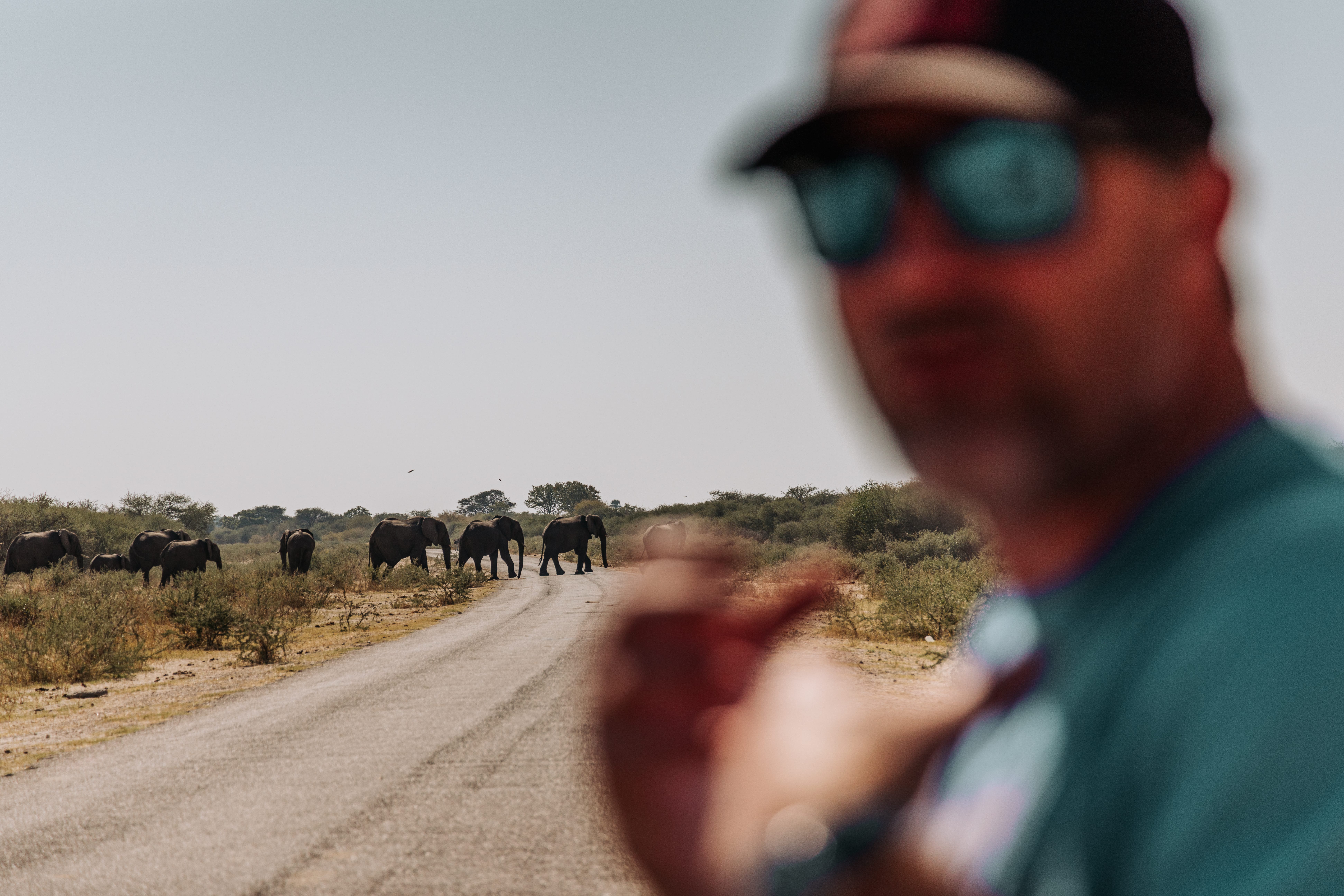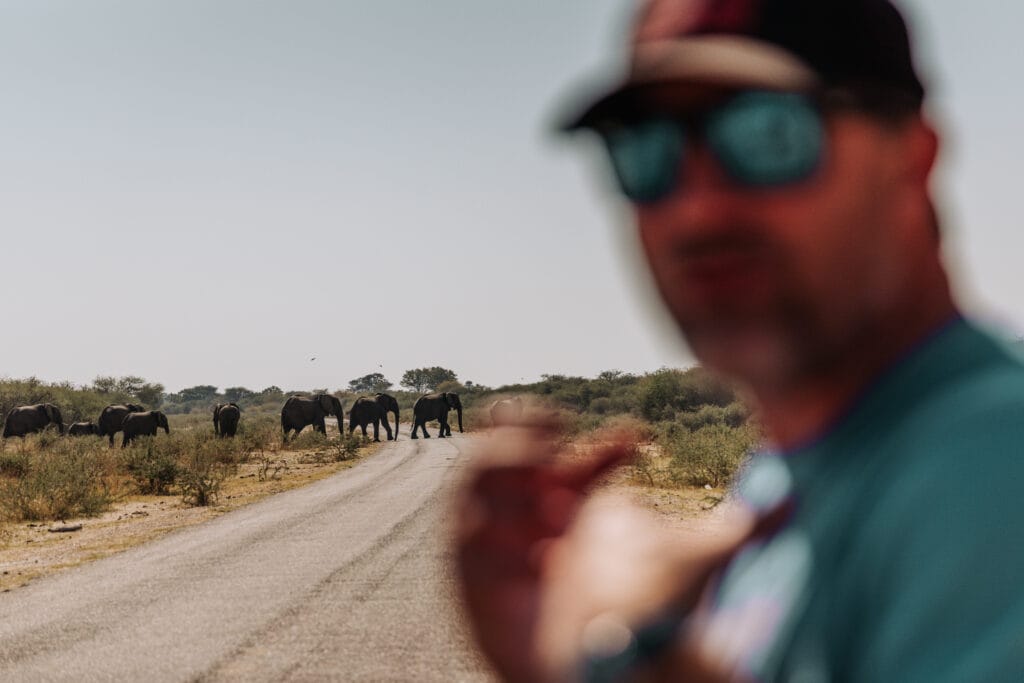There is always a need to discuss all options when it relates to wildlife management, specifically elephants. But there is also a point reached when theoretical discussion must take a back seat to actionable solutions. Finger-pointing must stop and action must occur.
In the past two weeks, there have been multiple articles criticising the North West Parks and Tourism Board (NWPTB) on their management of elephants in Madikwe. First, Adam Cruise’s op-ed, Killing without proof, and then Don Pinnock’s articlehighlighting the frustration of parliamentarians over the lack of action that is occurring in Madikwe.
Read more: Crisis in Madikwe: Too many elephants or just an excuse to hunt them?
Read more: North West Parks shows Parliament the finger over MPs’ concern for Madikwe elephants
Several months ago, the NWPTB, right here in the Daily Maverick, took responsibility for the current situation, and I paraphrase: we accept responsibility, but that’s in the past, let’s stop crying over spilt milk, and do something to rectify the situation.
However, it seems that the NWPTB cannot do anything without being told to stop, or speed up, or told to investigate actions that are not feasibly logical solutions. The NWPTB finds itself caught in the crosshairs of two opposing viewpoints, with the board and provincial elephant task team desperately trying to do something but being wrenched in both directions, like a tug of war that leads to paralytic inaction.
Management inactions
There are constant cries for the science. Where is the science that elephants are overpopulated and are leading to environmental degradation or biodiversity loss? If Madikwe has had vegetation/biodiversity monitoring in place for the past 10 years, then the data would be available. But I don’t believe it does. If that’s the case, we cannot go back in time. We can’t.
Science is needed to guide wildlife management and to ensure its sustainability, but it should never be used as a perfect utopian ideal for inaction. That’s the weapon being wielded by Cruise and Pinnock currently. On the other hand, the parliamentary committee is demanding to know why action is not occurring.
Madikwe can be viewed through a simple fact-based lens:
- There is an ever-growing elephant population;
- in a confined area;
- that eats a lot of vegetation;
- that is not infinite in its availability.
So what can you do?
Alternatives (immunocontraception, translocation, as well as habitat connectivity) have been proposed. However, every one is essentially an inaction solution for Madikwe.
Immunocontraception
Immunocontraception of elephants is logistically possible and cost-effective in small reserves (with small elephant populations) that are interested in maintaining a specific population size. It is a practice that has improved since its first use in the Kruger National Park in the 1990s; however, the management technique is most effective in small populations.
For immunocontraception to work on controlling elephant populations, one needs to drop the birth rate to below the mortality rate. In Madikwe, where elephant populations at last count were 1,600 (there are likely to be more than that currently), how long will it take to do that?
Immunocontraception in Madikwe is not only logistically challenging, but almost impossible. The reason is quite simple. For contraception to be effective, specific herds will need to be identified, specific females selected and vaccinated, and repeated with the exact individuals for the foreseeable future (Dr Cruise suggests that this will take a decade). So, over a decade, government or contracted officials will need to find the same herd, find the same elephants, and contracept them, over and over and over again.
Even though there may be a memorandum of understanding struck between the NSPCA and the NWPTB, I have yet to see that organisation put its hand up and say it would be willing to pay for the immunocontraception of Madikwe elephants at the scale that is required for today’s population mitigation.
Translocation
The translocation argument is quite simple to answer. There is not a single property in South Africa that is interested in taking elephants today. If there is, and there is somebody willing to take elephants, Madikwe has about 1,000 of the animals to give away. All you need to do is come and fetch them, according to the acting CEO of NWPTB. Dr Cruise suggests sending only calves and young elephants – but that idea is contrary to the National Norms and Standards for elephants that he quotes, where whole herds must be translocated at once, and not splintered into smaller units.
Habitat connectivity
Last, the most ambitious solution to Madikwe’s elephant problem is habitat connectivity and an expansion of Madikwe towards Pilanesberg. The South African population is growing at a rate of 1.25% per annum. Population growth rates in North West are currently at 1.6%, exceeding the national average.
There is evidence of human settlement and growth in and around Madikwe, as well as between Madikwe and Pilanesberg.
This land acquisition/expansion suggestion will run headlong into multiple challenges including a resettlement programme of individuals (which probably would not go down very well in modern South African society), the likelihood of the community land claim process (Madikwe has just been through one), as well as the well-known fact that land acquisition is very expensive, time consuming (often a multi-year process), and logistically challenging all the way up to the day of closing.
However, let’s assume habitat can be expanded very quickly. Then what? The situation that Madikwe is in today will be faced by the newly expanded park 10 years from now. An overpopulation of elephants in an enclosed fenced area. What will the solution be then? It sounds like a can being kicked further down the road to then regurgitate the same discussions and discourses.
An argument for dismissing lethal action in Madikwe is the idea of carrying capacity. Carrying capacity is a term of art in the ecological paradigm that suggests there is a specific number of animals that a habitat can hold.
I agree that carrying capacity is a dynamic, fluctuating ceiling based on climate, habitat condition, water resources and other factors. Madikwe probably doesn’t have a fixed elephant carrying capacity, but rather one that will fluctuate annually and over larger temporal scales based on the availability of resources. However, this does not mean that there is no ceiling to the number of elephants the habitat of Madikwe can hold, ie, there is a ceiling.
I think Dr Cruise, Dr Ferreira, Don Pinnock and Dr Seiler would agree – you cannot have an infinite number of elephants in an enclosed habitat and expect that habitat will not be degraded. I think they would also agree that in the no-action scenario, elephants will die, and in times when resources are not adequate, death will be en masse. Some will call that natural. Others, like the NSPCA and the growing public sentiment about elephant welfare, will not.
Culling
Why is culling being so quickly dismissed? Reasons given include a lack of science on population size and/or vegetation impact, and that the activity is illegal based on the National Norms and Standards. I find that both those reasons are being used to result in inaction.
To the science, regardless of what science you have, we can all agree that something needs to be done to manage elephants. Based on the arguments above, culling is the only actionable, near-term solution for that to take place.
Similarly, since all the options have been thought through and exhausted, there is no funding for the presented alternative actions, there is no willingness to participate, and the timelines are too long, culling satisfies the protocols of the National Norms and Standards on elephant management.
Arguments advocating for non-lethal solutions are based on ethical stances in animal welfare, but those stances are also rooted in theoretical possibilities, and not practical, actionable solutions.
The only current, viable, logistically possible solution that reduces elephant populations and can maintain a certain elephant population in Madikwe, is culling. Other options of immunocontraception and land acquisitions (translocation is not a future option) should proceed in series with culling as future options for management, but they are not implementable as the actionable present-day solutions.
There is no other current solution in Madikwe to solve its elephant management conundrum other than culling. If there is one, I’d love to know what it is. Management is needed. No more finger-pointing and more action. Because inaction is not a solution. DM

